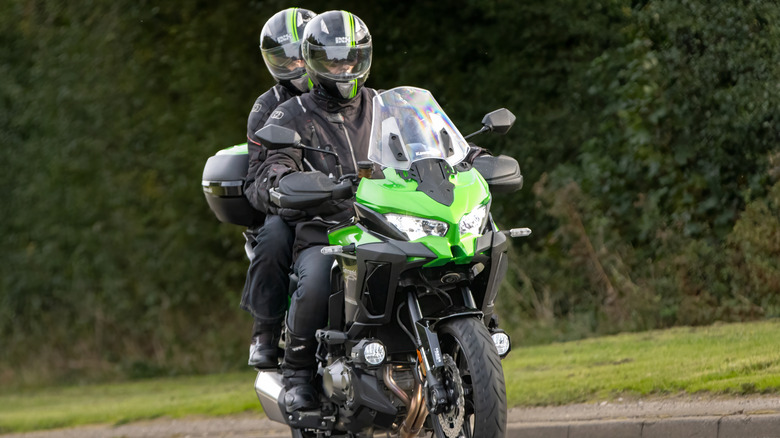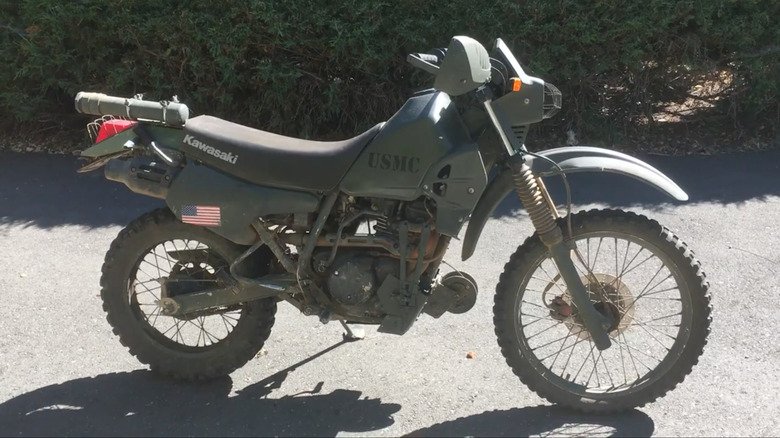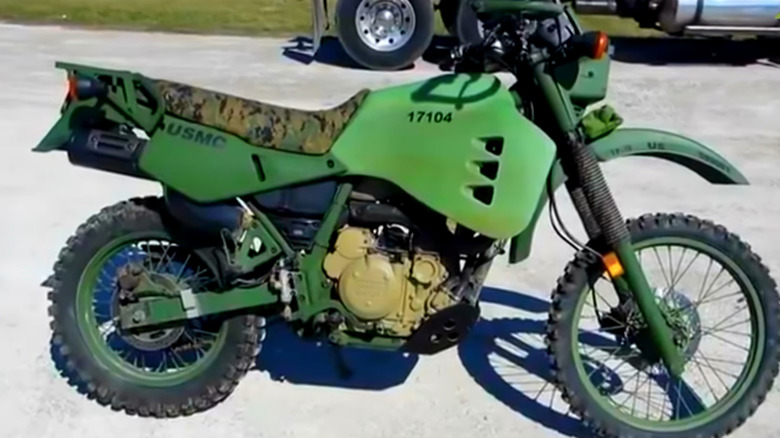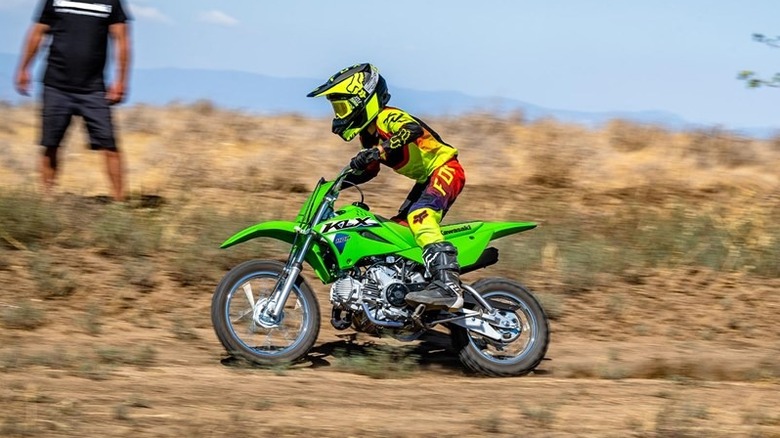3 Awesome Kawasaki Motorcycles Used By The US Military
Kawasaki has provided the U.S. military with motorcycles offering off-road capability and maintenance ease. Special Operations Forces, the Marine Corps, and the Air Force have employed these motorcycles in reconnaissance and message-delivering missions where larger vehicles can't travel. While most people associate military vehicles with armored trucks or helicopters, motorcycles have served the armed forces for more than a century, providing speed, mobility, and versatility in adverse terrain. The U.S. military even employed Harley-Davidson motorcycles during WW2.
Kawasaki's military inventory has included gasoline and diesel engines, adapted for extended range and ultimate portability. From full-size dual-sport platforms to carry equipment hundreds of miles, to minibikes small enough to be air-dropped into the most remote areas, every model was adapted or created to meet particular operational needs. The military versions of these vehicles began as civilian designs, which received blackout lighting and heavy-duty racks and reinforced suspension and subdued paint schemes. The diesel-powered variants operated on JP-8 jet fuel which followed NATO's single-fuel policy, thus eliminating the requirement for separate gasoline supply logistics.
These bikes are no mass-produced machines, and their use is reserved for specialized units that can make the most out of their capabilities. Whether taking a soldier deep into rugged terrain, carrying supplies to front-line units, or slipping undetected into contested ground, Kawasaki's military bikes have earned their keep in conditions where speed and nimbleness are the name of the game. Here's a closer look at five of the most notable Kawasaki motorcycles used by the U.S. military.
Kawasaki KLR250-D8
The KLR250-D8 has been a reliable option for U.S. Special Operations units, the Air Force, and the Marine Corps since its introduction in 1991. Based on Kawasaki's civilian dual-sport bike, the military version received key changes for field use, including the removal of a keyed ignition, the addition of blackout lighting, and camouflage paint. The KLR250-D8 weighs 295 pounds, which allows helicopter or truck transportation for quick deployment operations. The four-stroke single-cylinder engine delivers 22.8 horsepower while reaching a maximum speed of 84 mph. The 2.91-gallon tank provides sufficient operational range for short and medium missions, but its actual range depends on terrain conditions and load weight.
The bike features dual-sport capabilities, which enable it to move between paved roads and dirt tracks without needing any modifications. The rear hardpoint enables riders to transport small loads including equipment and messages to locations that big vehicles cannot access. The 75th Ranger Regiment has employed the KLR250-D8 for reconnaissance and liaison operations and other fast-paced missions that need high mobility. Unarmed by default, the bike can carry whatever weapons the rider brings, adding flexibility for various mission profiles. Its mix of transportability and agility has made it a dependable small-displacement motorcycle in the military's toolkit.
Kawasaki M1030-M1
The M1030-M1 stands out for its ability to run on JP-8 jet fuel. Based on the KLR650 platform (which remains one of the best dual-sport motorcycles for expert riders), it was modified by Hayes Diversified Technologies with a military diesel engine to meet NATO's single-fuel policy. Its 584cc four-stroke single engine puts out approximately 30 horsepower and 33 lb-ft of torque. Small as it is, that's more than enough power for the job.
The M1030-M1 is as fuel-efficient as they make 'em, achieving about 96 mpg and giving a range of more than 500 miles on its 6-gallon fuel tank. The bike features reinforced suspension for heavy gear, widened footpegs, blackout lighting, and sturdy cargo racks. The diesel engine produces vibration and restricts top speed to 90 mph, but provides unmatched fuel flexibility and endurance.
The M1030-M1 was used mostly by the Special Forces and the Marine Corps in Afghanistan and Iraq. It excelled where resupply was more complex, and its rugged terrain capability made it an ideal vehicle for transportation and reconnaissance in hostile ground. Though fewer than 500 were built, the M1030-M1 has earned a reputation as one of the most capable and fuel-efficient military motorcycles ever used by the U.S.
Kawasaki KLX110
The KLX110 is the smallest Kawasaki motorcycle utilized by the United States military, but it serves a special function. Special Operations Forces prefer to use it for missions requiring extreme portability and maneuverability in close environments. At a mere 168 pounds, it can be parachuted into remote areas or simply loaded into little helicopters. The military version has camouflage, a cut-down exhaust, and occasionally better suspension, but otherwise is mechanically very similar to the civilian version.
Its 112cc four-stroke engine makes it easy to operate, even for riders with minimal motorcycle experience. While not fast or powerful, it's highly effective for short-range tasks like scouting and supply runs. One of the more interesting uses was Air Force Special Operations soldiers using KLX110s to help prepare the landing strip in the desert for a C-130J Hercules. In situations like these, the bike's ability to carry equipment and people quickly over bad terrain was invaluable. The KLX110 isn't a combat vehicle, but for discreet, efficient mobility in confined environments, it's a proven asset.



